
News
Summers Will Not Finish Semester of Teaching as Harvard Investigates Epstein Ties

News
Harvard College Students Report Favoring Divestment from Israel in HUA Survey

News
‘He Should Resign’: Harvard Undergrads Take Hard Line Against Summers Over Epstein Scandal

News
Harvard To Launch New Investigation Into Epstein’s Ties to Summers, Other University Affiliates

News
Harvard Students To Vote on Divestment From Israel in Inaugural HUA Election Survey
Cannes Film Festival Roundup
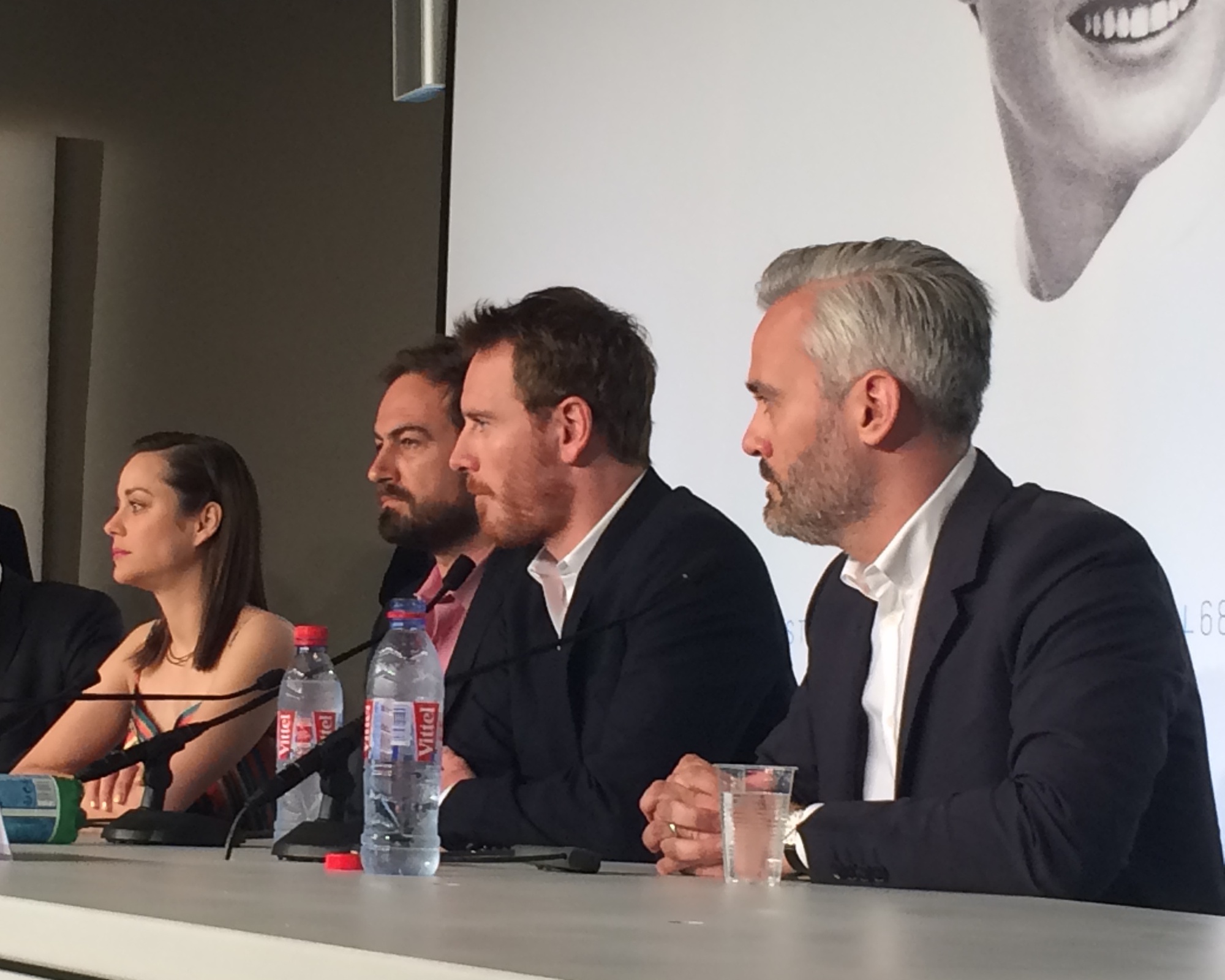
Note: Our first annual coverage of the Cannes Film Festival concluded on Sunday, May 24th. We posted daily updates to this liveblog with coverage from both of our foreign correspondents at Cannes, Alan R. Xie and Tianxing V. Lan.

Day One: Wednesday, May 13th
Alan R. Xie: Prominently positioned on a beach of the French Riviera, at the end of several blocks of luxury European brand name stores, is a sprawling white building with a blue glass façade, home to the Cannes Film Festival. Known as the Palais des Festivals, the building features above its front entrance the large, smiling face of actress Ingrid Bergman—also emblazoned on the official festival poster that one can see plastered on every building within a two-mile radius. Holding a perpetual stare into the distance, she looks out over the red carpet at the ever-increasing mass of hundreds of people below. Even though it’s only the first day of the festival, everything is already in full motion—the first press screening of the festival’s opening film “La Tête haute” (“Standing Tall”) is at 10 AM, followed by five other screenings and two press conferences throughout the day.

This is most definitely not Dick Diver’s Cannes. Our Airbnb is a 20-minute walk from the Palais, past many small streets filled with lively bars and restaurants. Every entrance to the Palais has at least two security guards, all decked out in matching beige suits, and they scan badges, search backpacks, and wave security wands. At registration, I’m handed a yellow badge and a bag with various schedules inside, including a separate one for press screenings. There’s a designated pressroom filled with expensive computers for which we’re provided individual logins, but no luck—most of the keyboards are in AZERTY format and every workstation is already occupied. There’s also a Wi-Fi room down the hall but its range is limited; the room aesthetically resembles a small Apple Store and is filled to capacity with people. All the tables and chairs are occupied, so I sit on the floor next to some other poor journalists. We’re kicked out within ten minutes for being a fire hazard. The Wi-Fi room is coincidentally situated right next to the press conference room, and as I exit, I notice the festival’s jury in the hallway, flanked by yelling cameramen and reporters: Sienna Miller, Jake Gyllenhaal, the Coen brothers, Guillermo del Toro, and a few others I don’t recognize.
At 4 PM, I queue for a screening of “Umimachi Diary” (“Our Little Sister”), one of the films in competition for the Palme d’Or. It turns out that Cannes is like Disney World—most of your time is spent waiting in line, and some people will end up cutting in front of you because they’ve got better passes. At Cannes, the color of your badge is the most important: The highest in the hierarchy is white, followed by pink with red dots, then pink, blue, and finally yellow. The various levels of priority dictate who’s allowed into a screening or press conference—and unfortunately, that means we’re dead last. If we want any chance of getting into the first screening of a film (especially a film in competition), we’ll have to show up at least an hour beforehand to beat the hundreds of other journalists competing for a seat. The same goes for any press conference with people whose names we actually recognize. Needless to say, I don’t get into the first screening of “Umimachi Diary.”
As I walk back to the Airbnb that night, I see handsome men in tuxedos and beautiful women in dresses stroll down the boulevard to parties that I haven’t been invited to. I keep repeating the directions to myself: “If you walk past the Hermès, you’ve gone too far.”
Tianxing V. Lan: I arrive late in the afternoon at around 6 PM, after Alan had already figured out how the festival works. As I make my way through the crowd at Nice Airport to the festival’s press shuttle, I notice people holding signs to pick up Ken Watanabe and other executives, and I tell myself, “Yes, this is Cannes.”
Hints that I am at the biggest film festival in the world appear with increasing frequency. From the bus window I can see shops with the Cannes poster, women walking down the street in shiny Valentino, a barbershop called “Coiffure Nouvelle Vague,” and finally—the breathtaking view of “Le Palais,” where most of the films are screened.
After collecting my badge, I immediately run to the line for “Il Racconto Dei Racconti” (“Tale of Tales”) at 9 PM. I had already heard about how terrible the lines in the afternoon were, and the fact that Alan wasn’t admitted into screenings earlier today makes me more nervous. Luckily, the line for the evening screening isn’t too bad since it is already the day’s second screening of that film, and I get in without a problem. After around 350 journalists settle down in the Salle Bazin (the theater mainly used for repeat screenings), the projector buzzes and the opening animated credits for the festival start to play. When the logo “Festival de Cannes” appears on the screen, the whole theater bursts into thunderous applause.
Read more in Vincent’s review of “Tale of Tales”: “The film is an extremely visual piece—a collage full of bizarre monsters, towering mountains, grandiose castles, and exquisite costumes, full of many breathtaking moments.”
Day Two: Thursday, May 14th
ARX: At Cannes, sleep is for tourists with Cinephile badges, because there are too many press screenings in a day for a single human to physically go to, and they run from 8:30 AM to midnight. If you’re a holder of a yellow badge, you’d better be awake by 7:15 AM to get in line. Luckily, as several University of Pennsylvania students informed me today, there’s unlimited free espresso provided throughout the Palais. I part ways with the Penn students before noon when they head outside to beg for invitations to screenings. Most of the screenings admit badge-holders, especially press (in varying priority), but red carpet premieres in the Grand Théâtre Lumière are invitation-only—although certain press screenings in that venue do admit press based on availability. On the street, tens of people can be seen—mostly in formal attire—holding signs that read “Invitations s’il vous plait.”
We manage to secure seats for the press screening of “Mad Max: Fury Road,” and the Grand Théâtre Lumière is absolutely breathtaking. It has a capacity of over 2000 seats and features five catwalks on both sides of a stage decked out with over a hundred lights. The screen is so large that it could shame even the largest IMAX theatres in America. The seats are of a comfortable black cloth, separated by armrests of majestic red wood.
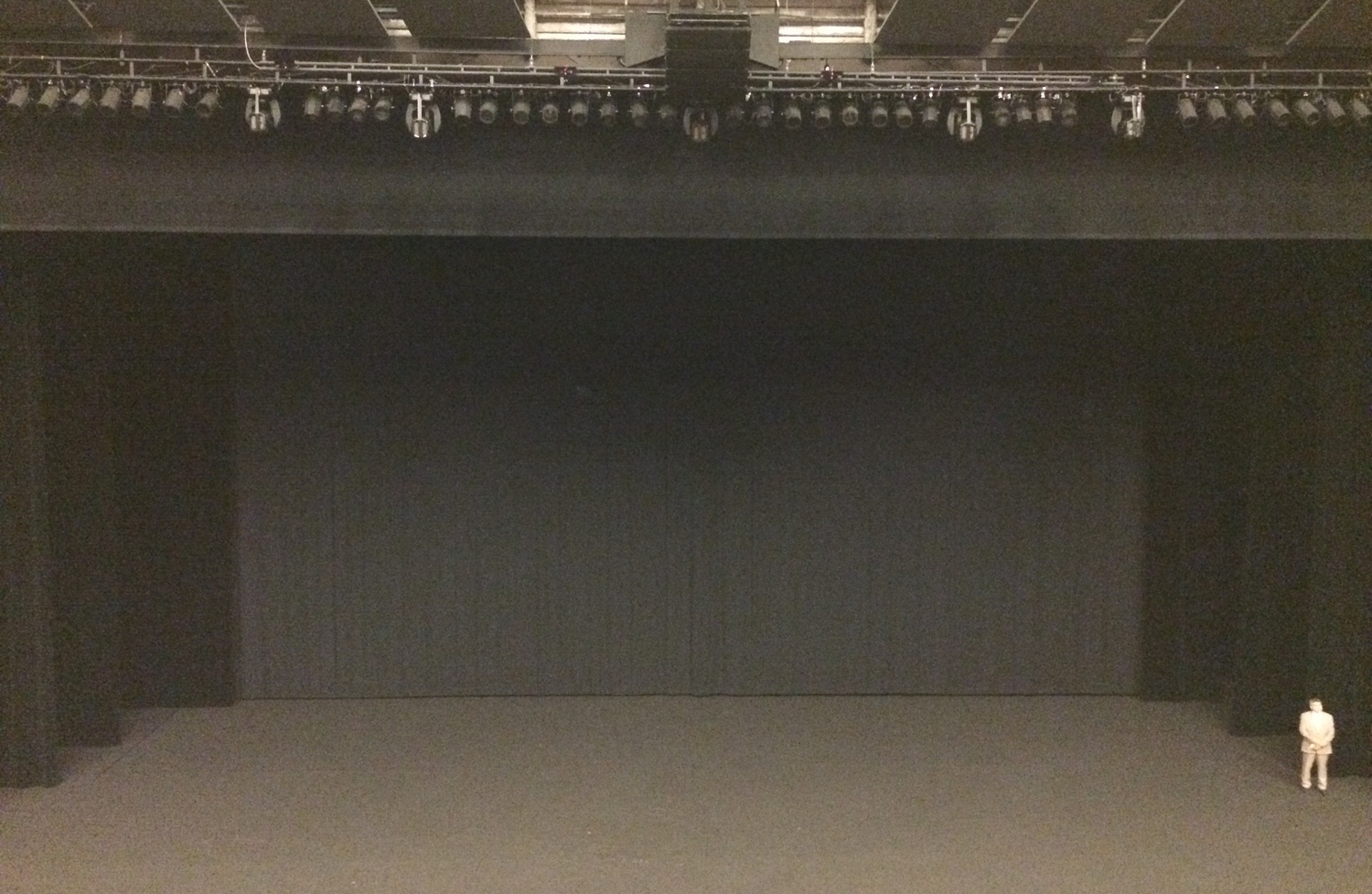
TVL: “Mad Max” is insane. When I talked to an Estonian film critic yesterday, she said, “It’s a little funny to say that, because it’s supposed to be about ‘art cinema,’ but I really want to watch ‘Mad Max.’ It looks so fucking good.” She immediately apologized for using the F-word, but then added that only that word could convey how awesome the trailers looked.
I haven’t met her again, but I am sure she is not disappointed, and “Mad Max” is worth more than one F-word. It’s rare that an audience in Lumière would applaud for a mainstream action film, but during “Mad Max” there are at least three rounds of huge applause after the breathtaking action sequences. When the film ends, some people shout “Bravo,” and when the name of director George Miller appears in the credits, there is another huge round of applause.
Read more in Vincent’s review of “Mad Max: Fury Road”: “Packed from the first minute with breathtaking and non-stop action sequences, it is so devastatingly and aggressively exciting that even the pickiest critic should applaud mastermind director George Miller.”
ARX: I take a moment to breathe in the afternoon at the special screening of “Hayored Lema’ala (Afterthought),” a debut film by Israeli director Elad Keidan. The wonderfully experimental black comedy explores various philosophical questions and is set on the Israeli port town of Haifa’s Carmel Mountain. It’s not typical Cannes fare compared to some of the other films we’ve seen in competition or in Un Certain Regard, but it’s still quite a trip—albeit a slow burn of a film.
Read more in Alan’s review of “Hayored Lema’ala”: “At times light-hearted and at others starkly depressing, the film takes a philosophical bent on modern Israeli life through the lens of two very different people united by coincidence.”
TVL: In the afternoon, I go to the press conference for “Tale of Tales.” Similar to screenings, high level badges always admit you first—and with a yellow badge, you will probably be rejected if you don’t queue up well before the event. In the conference room, there are staff members specifically in charge of picking journalists to ask questions and handing them microphones.
Salma Hayek is very talkative and well aware of how to deliver entertaining answers, so despite the presence of other big stars, including Vincent Cassel, she basically takes control of the whole event. A particularly interesting anecdote she mentions is about the weight of the costumes. In a scene where she chases her son through a labyrinth, the dress she wore weighed more than 30 kilograms. However, she had to run for 45 minutes from one room of the labyrinth to another room just next to it and had to do it many times for different shots. At last she couldn’t bear it, and the director had to ask the crew to push her over the wall to the second room.
At 4 PM is Hirokazu Koreeda’s “Umimachi Diary.” Although it had a press screening yesterday, today is the official world premiere. There is a red carpet event before the screening, and the cast and Koreeda sit together with the audience to enjoy the film. Normally, journalists are only allowed to attend press screenings, but considering the press screening yesterday was in Salle Bazin, which could only accommodate just over 300 people, this particular screening is open to all press. The film is as delicate and slow as most Koreeda films, and to be honest, after all the registration and orientation of yesterday, and the devastatingly exciting “Mad Max” earlier today, quite a number of people fell asleep.
Read more in Vincent’s review of “Umimachi Diary”: “The cinematography is beautiful, the performance is performances are easily connectable, and the pacing is natural. Koreeda shows his great power of observation when the emotional bonds of the characters are represented in or developed through the most tiny details like cooking or walking.”
ARX: Afterwards, I attended the opening ceremony of the festival’s Un Certain Regard section, held in Salle Debussy. This selection of films has its own jury and exists separately from the official films that are in competition for the Palme d’Or. The festival’s General Delegate, Thierry Frémaux, introduced the jury for Un Certain Regard before inviting the cast of “An” and its director Naomi Kawase onto the stage. After brief remarks, they joined us in watching the film.
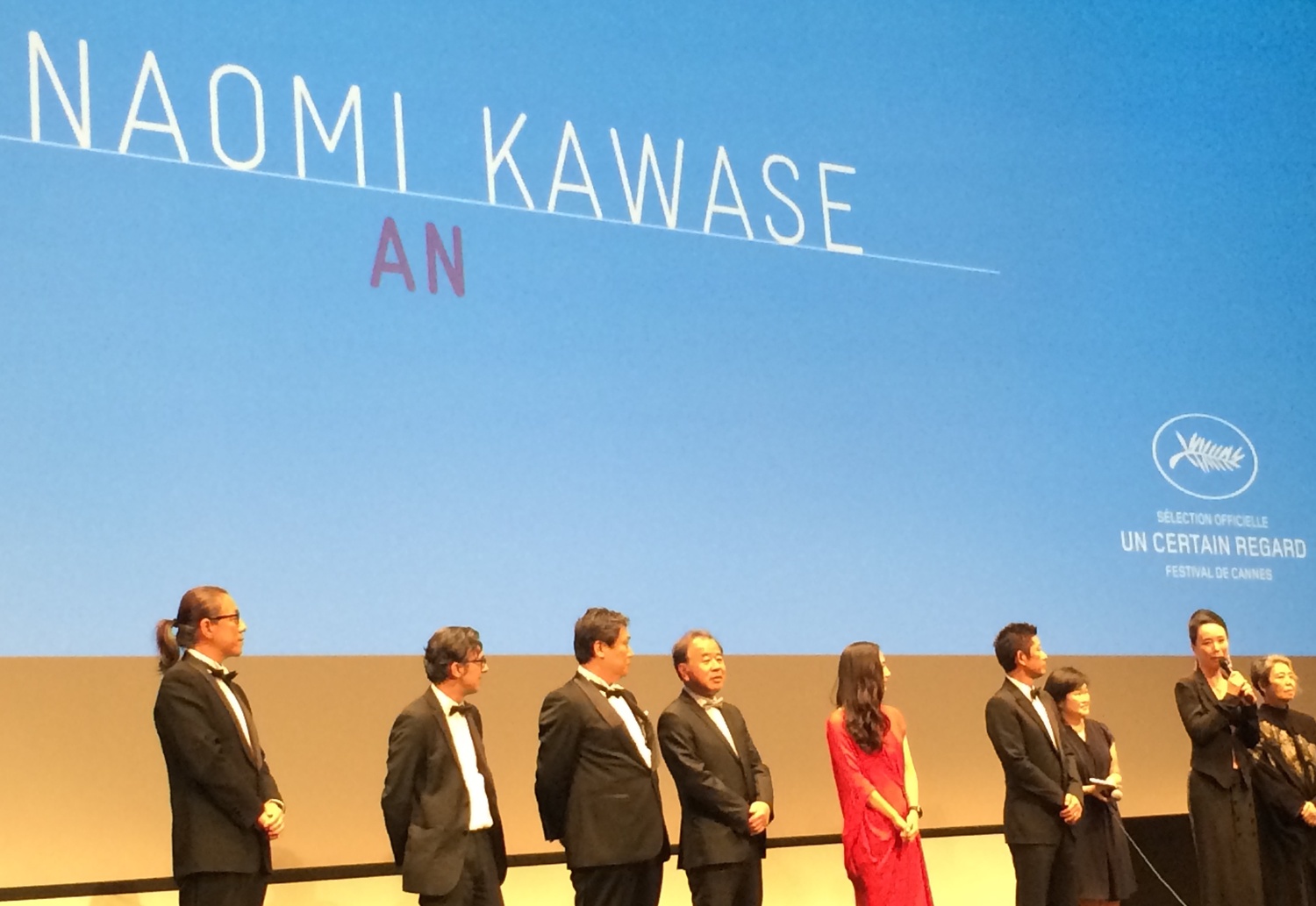
Read more in Alan’s review of “An”: “When the characters converge, they learn something more about themselves, and even past the film’s bittersweet denouement, the rhythms of the seasons still relentlessly continue. Kawase’s slow-burn drama ultimately leaves an important moral—and like the titular dessert, it’s never too sweet.”
We concluded the day with a screening of “Saul Fia (Son of Saul),” a debut film from Hungarian director László Nemes. It was at once relentlessly captivating and undeniably horrifying, being a film about the Sonderkommando—specially designated Jewish prisoners who were forced to assist the Nazis in the day-to-day operations of their death camps. The film’s fast pace and unflinching portrayal of Holocaust horrors made it a truly intense finish to our second day. It was hard not to be struck by the sharp contrast between the brutality of the film and the raucous midnight debauchery all around us as we walked home.
Read more in Alan’s review of “Saul Fia”: “The film moves swiftly from one scene to the next, and the utterly unpredictable and horrifying events that seem to occur every other minute make it an unsettling yet unforgettable experience.”
Day Three: Friday, May 15th
TVL: When I first came to Cannes, a journalist warned me that I should not expect to sleep at all. In the day I would queue for and watch films, in the evening I would hang out and go to parties, and in the late hours of the night I would write. The only time I should sleep is when the films are boring—I could sleep in my seat.
What she said is quite true, but today Alan and I are so tired that we sleep past the starting time of “The Lobster,” a film in competition by Greek director Yorgos Lanthimos. We decide to stay in until the afternoon screening of “A Tale of Love and Darkness,” the directorial debut of Natalie Portman ’03. In retrospect it was a wise decision, because despite the film’s artistic merit, it was also quite slow and fragmented, and I would have probably fallen asleep. An old Israeli critic sitting next to me thinks it is not as good as the original novel, and he is very annoyed by the overuse of voice-over, but I am gladly surprised by the mature execution Portman showed in her debut.
Read more in Vincent’s review of “A Tale of Love and Darkness”: “It seems obvious that Portman has put a lot of work into establishing and maintaining her style, and, as a new director, she is surprisingly sophisticated in carrying it out. The film is solemn, contemplative, and full of references to the rich and often painful history of the Jewish race.”
ARX: In the evening, we went to a screening for Gus Van Sant’s “The Sea of Trees,” which stars Matthew McConaughey, Ken Watanabe, and Naomi Watts. We had heard that this film was highly controversial—it had actually been booed at its first press screening, an almost unheard-of occurrence. Although I ultimately thought that the film was beautiful (if at times emotionally exploitative and narratively simplistic), other members of the audience in our screening disagreed—the credits were met with a small chorus of disapproval.
Read more in Alan’s review of “The Sea of Trees”: “From breathtaking shots of the lush, green landscape to close-ups of the two men walking through the forest at night, ‘The Sea of Trees’ is still a visual spectacle to behold—just less Cannes fare than standard Hollywood.”
TVL: The red carpet event for “Mad Max” is held in the evening, and thousands of tourists and locals swarm to the Palais in mad enthusiasm, blocking the streets (there are armed police here every day to direct the traffic) and setting up ladders in order to see the stars. Tourists from the U.S. and everywhere in Europe come here in the hope of spotting Charlize Theron or Tom Hardy and are joined by lesser-known actors and actresses walking on the street in their shiny Dior dresses or Tom Ford tuxedos. In the evening, Aston Martins and Ferraris roar beside the beach, and streets are blocked once again by carnival crowds at the bars. Just like in “The Great Gatsby,” which kicked off the festival two years ago, Cannes is an enormous party.
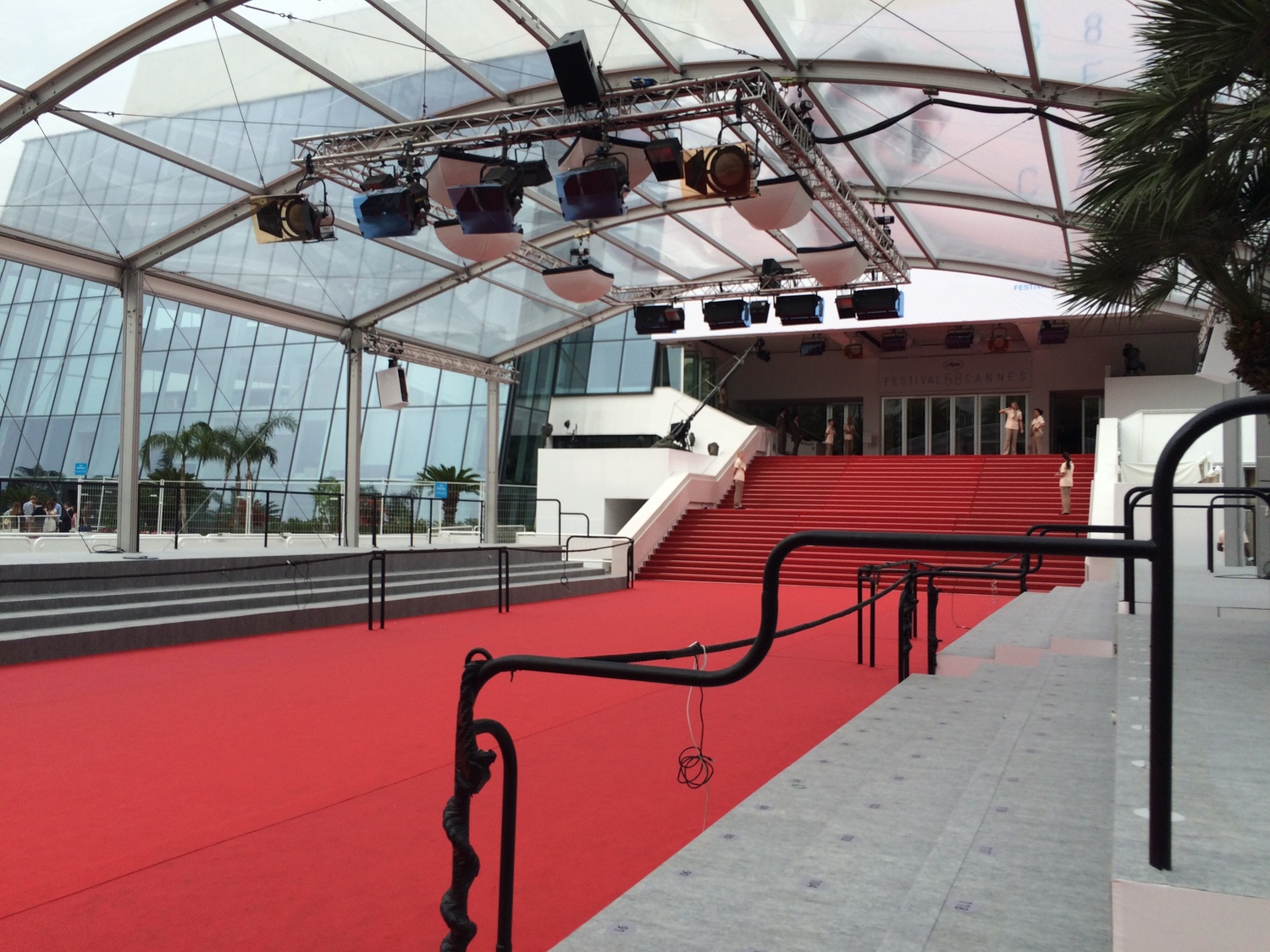
Day Four: Saturday, May 16th
TVL: To start our fourth day, we watch “Mia madre (My Mother),” which turns out to set a high standard for the rest of the day’s screenings. Directed by Palme d’Or winner Nanni Moretti, it has the best things Italian movies have to offer: great rhythm in pacing and cinematography, an enchanting but not overdone performance, and a beautiful sense of sorrow and melancholy. Recently, there seems to be a resurgence of Italian films; “The Great Beauty” from two years ago, for instance, really amazed me (interestingly, its director Paolo Sorrentino is heavily influenced by Moretti). There are three Italian films in competition this year, and although “Tale of Tales” was merely all right, “Mia madre” is very well done. This also gives me more hope for Sorrentino’s new film “Youth,” which will screen on Wednesday.
Read more in Vincent's review of “Mia madre”: “With a well-written screenplay and a nuanced performance, ‘Mia madre’ is clearly a beautiful film with a lasting charm. Once again, it proves Moretti’s status as the greatest living representative of Italian cinema.”
ARX: We managed to catch a repeat screening of “The Lobster” at 11 AM in the Salle du Soixantième. I remember watching one of the director’s previous films, “Canine (Dogtooth),” several years ago during high school. The minimalist cinematography and lurid sexual overtones of that film were disturbing at the time; however, “The Lobster” is definitely a much more accessible art film. The absurdist satirical tone of the film reminded me a lot of the British television series “Black Mirror,” which satirizes our current relationship with technology through a variety of very interesting speculative scenarios.
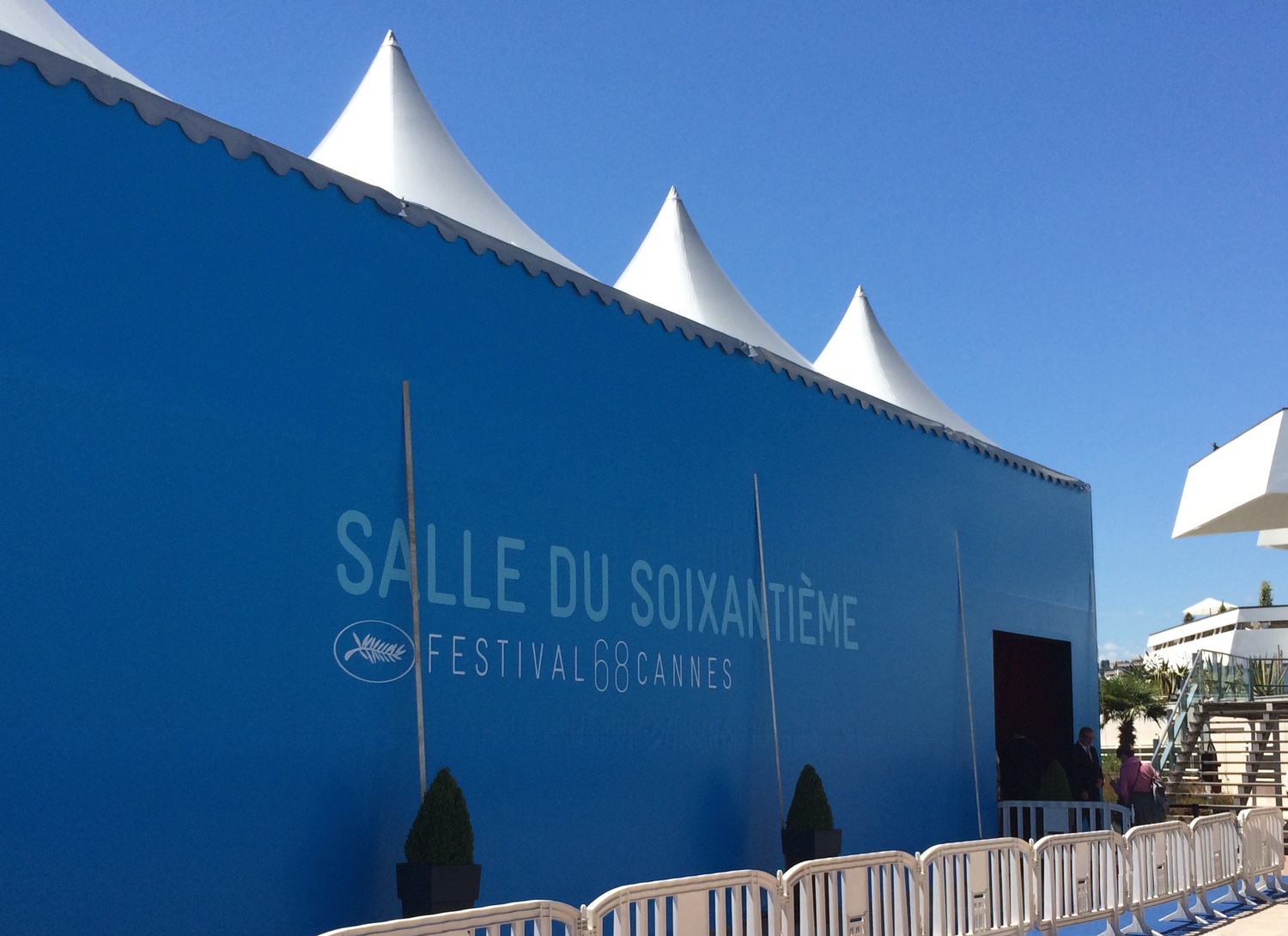
Read more in Alan’s review of “The Lobster”: “From Greek writer-director Yorgos Lanthimos—also known for the lurid and provocative ‘Canine (Dogtooth)’—the cleverly written film is a hilarious, understated black comedy that explores the dangerous ramifications of in-group bias and conforming to labels.”
Immediately afterwards, we caught a repeat screening of Woody Allen’s new film “Irrational Man” in the same theater. We waited 30 minutes in line before being admitted—ample time to hit the newly discovered McDonald’s down the street—but unfortunately, the line was too long to order food before the screening. We did discover that an order of 20-piece Chicken McNuggets costs a little over nine Euro—twice the price back home, but a steal in Cannes.
“Irrational Man” turned out to be one of the best films we had seen so far in the festival. I’ve seen a couple of Allen’s newest films, such as “Blue Jasmine” and “Midnight in Paris,” but this film blows them out of the water. Its fast pace and excellent acting made it an extremely enjoyable experience, especially in contrast to the relatively slow films we have seen so far that have been in competition.
Read more in Alan’s review of “Irrational Man”: “Incomparably stylish and well-paced, Woody Allen’s newest film ‘Irrational Man’ concludes the writer-director’s ‘Dostoyevsky trilogy’ and marks a personal best in his career.”
The highlight of the day was surely the press conference for "The Sea of Trees." Director Gus Van Sant, as well as Matthew McConaughey and Naomi Watts, were present for a tense Q&A—the elephant in the room being the film's exceptionally poor critical reception the day before. Nonetheless, it was still a surreal experience to hear Matthew McConaughey talk in person—as someone who's been a fan of his ever since his romantic comedy days, it was incredible just to sit in the same room and listen to his Texas drawl.
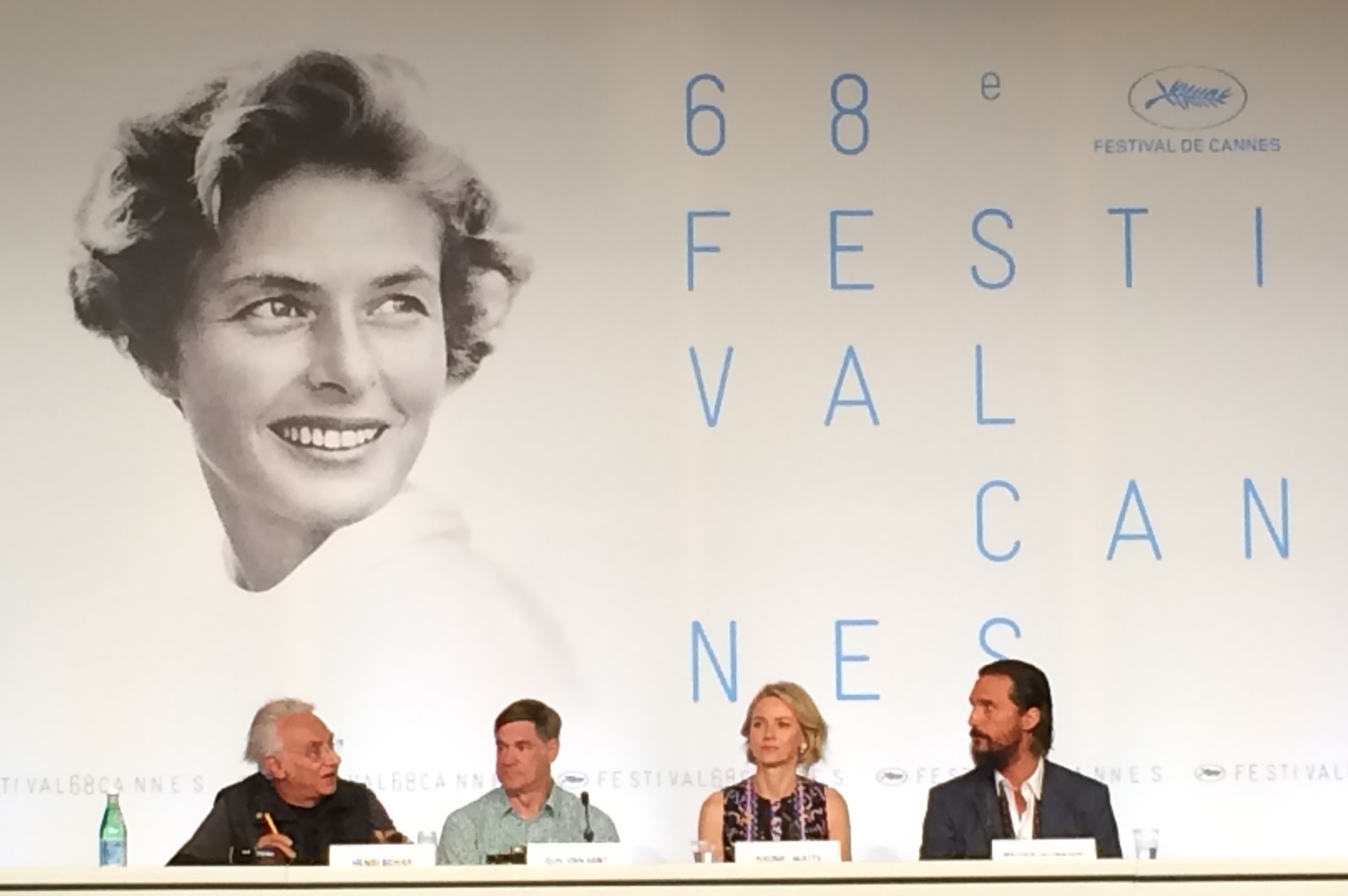
TVL: After the press conference for “The Sea of Trees,” I attend the Director’s Fortnight screening of “As Mil E Uma Noites (Arabian Nights), Volume I: The Restless One.” Although I know the film has a lot of hype, I am still shocked by the line—taking up a whole street and then extending around the corner. Rumor has it that Cannes initially wanted “Arabian Nights” in competition, but since the piece is six hours in length, it was simply impossible to accommodate in the festival’s tight schedule. It ended up split into three parts in the Director’s Fortnight—a parallel unit of the festival—and is screened on three separate days.
There is a small introduction before the film given by director Miguel Gomes, a crazily cool guy who asks the whole cast to stand on the stage, introducing them one by one while cracking a lot of jokes. By this time, I already know “Arabian Nights” is going to be unusual, and although I think the critical press reception is a bit too enthusiastic, it is nonetheless a very interesting film.

Read more in Vincent's review of “Arabian Nights”: “‘Arabian Nights’ is perhaps the weirdest film at this year’s Festival de Cannes, and among the funniest. Only time will tell, however, if the film will become an all-time classic or collect dust on the shelf, regarded purely as a high-quality offbeat satire.”
Day Five: Sunday, May 17th
ARX: By this point, we've essentially mastered Cannes. We wake up every morning at 7:45 AM and arrive at the Palais within 30 minutes to secure ourselves seats for the 8:30 AM press screening of a competition film in the Grand Théâtre Lumière. There's a charming bakery down the street from our apartment, and we purchase two croissants every morning that we eat on our walk down to the Palais. This morning's screening is "Mon roi (My King)." It's embarrassing to admit, but I only recognized the film's star, Vincent Cassel, from a minor role role he played in "Ocean's 12." I'm pleasantly surprised by his dramatic range, and the film as a whole comes off as a very sophisticated romantic comedy-drama—certainly more enjoyable than American films of the same sort.
Read more in Alan's review of “Mon Roi”: “‘Mon Roi’ never ceases to draw empathy for its characters, and even in their greatest mistakes or most indulgent moments of self-pity, the actors give us a real reason to care.”
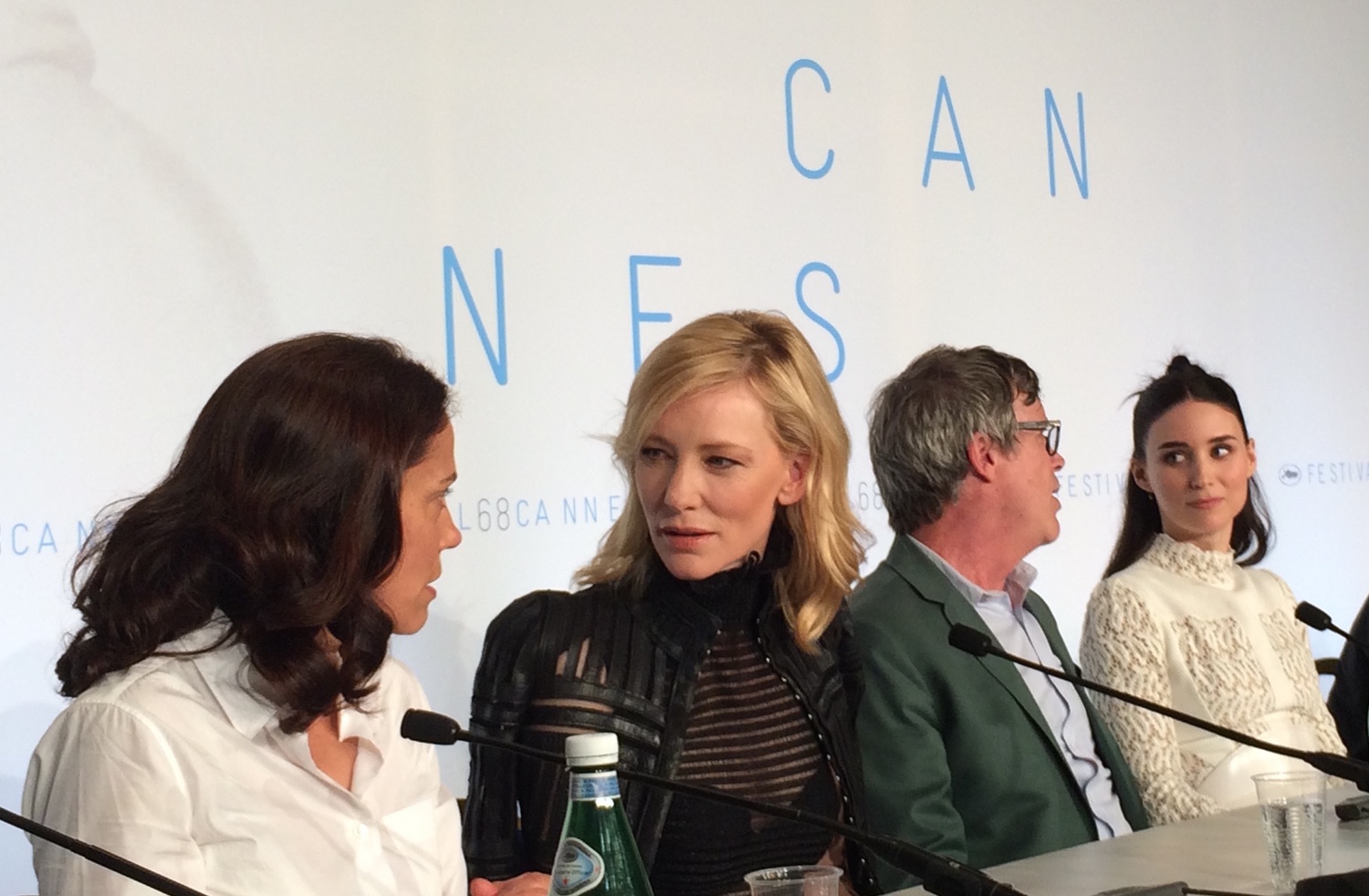
TVL: I have been excited for the whole day about the press conference for “Carol” because of the two leading stars. I was blown away by Rooney Mara’s acting and elegance when I watched David Fincher’s adaptation of “The Girl with Dragon Tattoo,” and Cate Blanchett—who doesn’t love Cate Blanchett? We get in line well before the beginning of the press conference and still barely manage to be admitted. Blanchett shows her great communication skills and intelligence in the conference, answering every question on point. Rooney Mara doesn’t speak much, but when asked about her nude scene in “Carol,” she replies frankly (and to great applause), “I’m nude quite often, so it’s not really a big deal.”
Afterwards, we attend the Un Certain Regard screening of “Nahid.” Although the overall style of this Iranian realist piece is somewhat predictable (which is to say, similar to the mass of Iranian realist films that followed after “A Separation” won the Academy Award for Best Foreign Language Film in 2012), it is very well made, and the leading actress gives an impressive interpretation of a mother struggling in poverty and against the patriarchy.
Read more in Vincent's review of “Nahid”: “As a debut film, ‘Nahid’ is surprisingly mature and gives a vivid and realistic representation of a mother struggling within social restrains. It invites the audience to share Nahid’s worries, happiness, and troubles, and to ponder broader questions about modern societies.”
Day Six: Monday, May 18th
TVL: In general, the quality of the films in competition this year has been a bit disappointing. There hasn’t been anything as shocking as “Adieu au Langage” or “Antichrist,” or as fascinating as “Only Lovers Left Alive” or “La Vie d’Adèle.” However, starting from the fourth day, there has been a stable increase in the quality of the films, and today’s first film “La loi du marché (The Measure of a Man)” is another great surprise. I knew little about either the director or the main actor, but they do an amazing job in creating a plainly beautiful, touching, and unforgettable realist drama about the dignity of a man suffering from an economic crisis. It is reminiscent of works by the Dardenne brothers, or even “The Bicycle Thief,” and the leading actor, Vincent Lindon, definitely has a great chance at winning the festival’s Best Actor Award.
Read more in Vincent’s review of “La loi du marché”: “‘La loi du marché’ is a precise, direct, and profound depiction of the current European economic crisis, and it has great power in its understatement and extremely relatable story. It is almost ironic that it was shown at Cannes, where right outside the theater is a street full of sports cars and luxurious clubs.”
ARX: I have always been a huge fan of animation—foreign or domestic—and Pixar especially has a fond place in my heart (except for the merchandising scheme that was “Cars 2”). I have the utmost respect for Pete Docter because of his work on “Up,” which is one of my all-time favorite films. Although I was initially apprehensive about the seemingly reductive storyline of “Inside Out,” the film surprises me with its imagination and tenderness. The voice acting is impeccable—Amy Poehler, Bill Hader, Lewis Black, Mindy Kaling, and Phyllis Smith are all wonderful comedians, and they each bring a distinctive flair to their respective characters. I was moved by the film’s beautiful and minimalist piano theme, set to a heartwarming memory of the protagonist ice skating as a small child. Unsurprisingly, the score is composed by Michael Giacchino—the same composer who won an Oscar for his amazing work on “Up.” When the film ends, the Lumière bursts into loud applause that we haven’t seen at most screenings since “Mad Max” several days earlier.
Read more in Alan’s review of “Inside Out”: At times capable of evoking a profound sense of childlike wonder and loss, 'Inside Out’ does what Pixar does best—and the result is a thoughtful coming-of-age film that will leave children wide-eyed and adults wistful.”
The real treat of the afternoon is the “Inside Out” press conference, which features Pixar greats John Lasseter and Pete Docter as well as Amy Poehler, Phyllis Smith, and Mindy Kaling. The press conference room is surprisingly empty—apparently the art film crowd at Cannes is unfamiliar with American television stars. I manage to score the first question of the event, which I direct at Amy Poehler. I ask her about the similarities between her character Joy in the film and her role of Leslie Knope from “Parks and Recreation.” When I mention that I am from The Harvard Crimson, she smiles and cheers, “Go Boston!” As she answers my question, she jests, “I only do one character.” It was also an unbelievable and inspiring experience to hear John Lasseter and Pete Docter speak about their work in animation, especially how the industry has changed in the past 20 years after “Toy Story.”
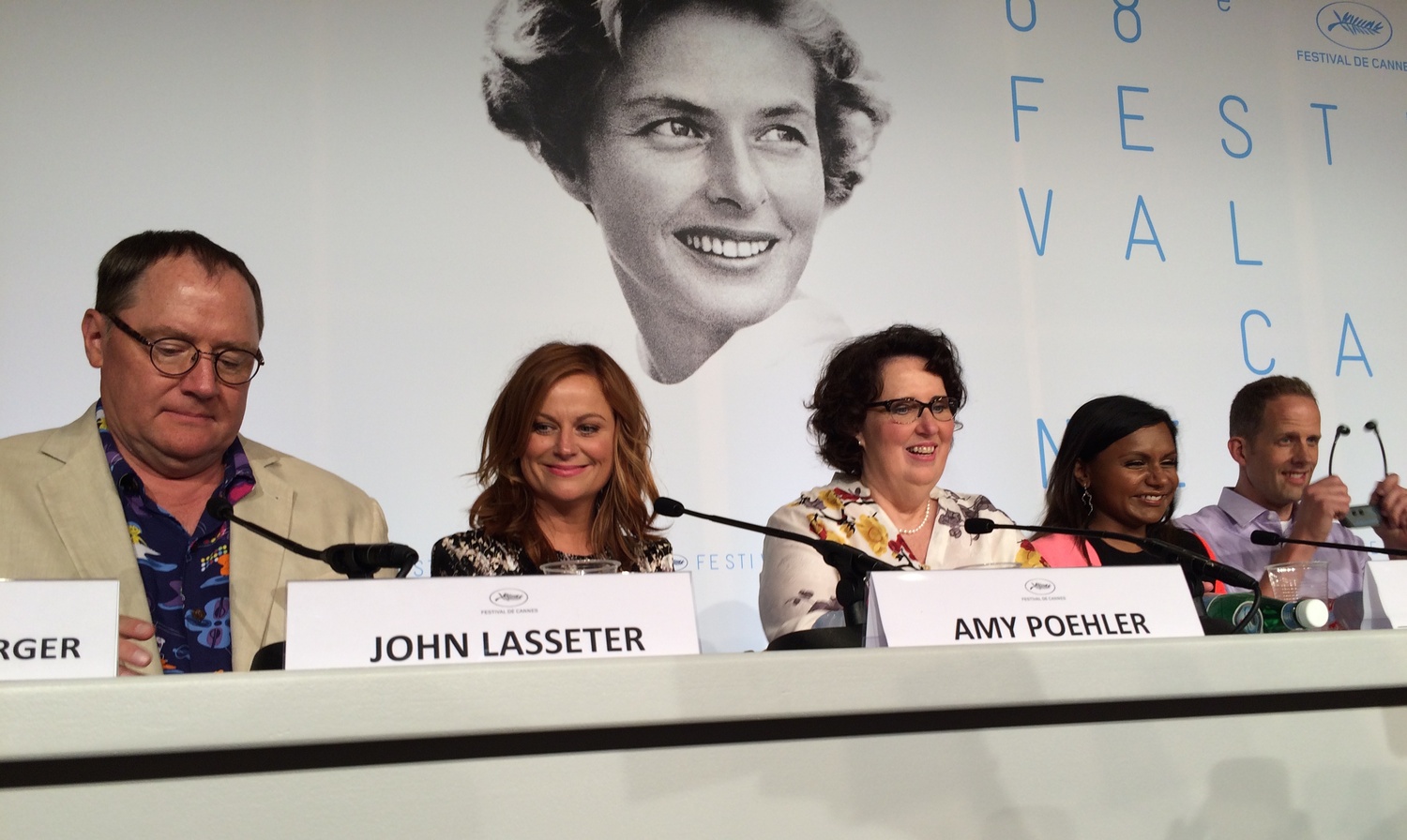
TVL: We couldn’t get into the initial press screening of “Carol” because the line was incredibly long—and the minute after it concluded, rumor quickly spread that it was the best yet film of this year’s festival, receiving an incredible 3.5 out of 4 aggregate score in a daily festival publication (the second-highest being “Saul Fia” at 2.8 and the lowest being “The Sea of Trees” at 0.6). This builds up my expectations to an extremely high level, and to be honest, I am not let down. The film is beautifully shot, and every character’s emotions are delicately restrained. Director Todd Haynes completely transports us back to the ’50s, and the performances from Cate Blanchett and Rooney Mara are mesmerizing. Every time their eyes meet, it seems that even the air between them is frozen. Although the two films are different in many ways, “Carol” really reminds me of Wong Kar-wai’s 2000 film “In The Mood for Love.” Both are about a distant memory of a golden age, and both feature a love that is forbidden and restrained. Most importantly, both films are so beautiful that I want to take a screenshot of every single scene.
Read more in Vincent’s review of “Carol”: Todd Haynes’s ‘Carol’ is beautiful and nostalgic, like a call to a distant memory, or longing for a an unspeakable, hidden love. Its simplicity of plot belies a mastery of texture and mood that puts it head and shoulders above most modern romances.”
Day Seven: Tuesday, May 19th
ARX: I was initially intrigued by the selection of “Sicario” as a competition film, as it appeared to be a stereotypical Hollywood blockbuster action film about CIA intrigue starring several big-name stars. It turns out to be a completely different beast. Vincent puts it best—the film is sort of like “Zero Dark Thirty,” but about the Mexican drug cartels. We both think that the action scenes are very stylishly filmed without the typical excess of American action films. “Sicario” leaves me with a sense of dread; it forces the viewer to confront the daily horrors of the drug war from a perspective in which there is no moral high ground.
Read more in Alan’s review of “Sicario”: “Villeneuve smartly utilizes explosive action sequences like the film’s introductory scene very sparingly and to strong effect; he chooses to highlight the oftentimes unseen consequences of drug violence through the perspective of protagonist Kate Macy (Emily Blunt).”
My next screening is of a Korean thriller, “O Piseu (Office).” From the film’s extremely bloody first scene—which reminds me immediately of “Oldboy”—I can tell that I’m in for a treat. The director employs many horror film techniques and is a master of manipulating tension. Even though I’m exhausted from lack of sleep, the film never fails to keep my adrenaline pumping.
Read more in Alan’s review of “O Piseu”: “At certain points in the film, the line between reality and hallucinations becomes blurred, and it is unclear whether the fugitive Kim is actually lurking behind every corner. The office’s cubicles are transformed into a horrifying maze of blind spots, especially after work hours when the lights are dimmed and solitary characters are working overtime.”
I missed “Louder Than Bombs” earlier in the week because I was too tired, so I make up for it by catching a repeat screening today. This marks my third back-to-back film of the day. I’m interested in seeing Jesse Eisenberg in another serious dramatic role, especially because I enjoyed his performance in Richard Ayoade’s “The Double,” a Dostoyevsky adaptation. Director Joachim Trier has also sparked my interest, as he is a distant relation of the famous Lars von Trier. Although I found the ending of the film to be rather anticlimactic, it contained many very dazzling visuals and a few voice-over montages that were absolutely mesmerizing.
Read more in Alan’s review of “Louder Than Bombs”: “Memory is often intermingled with fantasy in juxtaposition to present-day reality, and scenes featuring the deceased Isabelle possess a lulling, dream-like quality.”
TVL: One of the most anticipated films in this year’s “Cannes Classics” selection is “Hitchcock/Truffaut,” a documentary inspired by a historical encounter between the two film masters. The two titular directors are both extremely loved in France and so the film is guaranteed to draw a huge crowd, but I am still shocked by the line outside the screening. The queue easily compares to that of any competition film, and since the festival has underestimated the hype, some crew members actually fail to find a seat and the festival staff is forced to make last-minute accommodations with the audience. The documentary itself is also very interesting, providing some rare insight into the works of Alfred Hitchcock.
Read more in Vincent’s review of “Hitchcock/Truffaut”: “As a film about filmmakers talking about filmmaking shown at the world’s biggest film festival, it is a great tribute to the Seventh Art.”
In the evening I see a Chinese film called “Shan He Gu Ren (Mountains May Depart).” I have been anticipating this film for a long time, especially because this is the only film from mainland China in competition. I enjoy the film very much but am surprised by how divided the critical reception is between Chinese and western media. While most western outlets have almost unanimously given positive reviews to this moving portrait of long-lasting family bonds that features an incredible performance from lead actress Zhao Tao, the majority of Chinese critics hate it. They think it’s clichéd and superficial and suspect that director Jia Zhangke has simply become a shrewd merchant who knows how to appeal to Western audiences. I can’t really explain this disconnect, and to some extent, I am suspicious whether my appreciation for this film means I have departed from my cultural roots.
Read more in Vincent’s review of “Shan He Gu Ren”: “Every story in the film happens at a time when China is experiencing huge changes, from economic growth to increasing trends of emigration. In many moments of the film, the director cleverly suggests the existence of a larger order of existence, and this cosmic force also serves as an important force that changes the life of the characters.”
Day Eight: Wednesday, May 20th
ARX: With yesterday’s exhaustively long schedule of screenings, today finally gives us a chance to breathe. After seven consecutive 20-hour days, during which we published 22 reviews, it is a well-deserved break. Of course, a break at Cannes simply means missing the 8:30 AM screening—I’m still up by noon, and Vincent arrives at the Palais long before me to attend several press conferences.
TVL: Although I go to the press conference of “Youth” thirty minutes ahead of time, I can’t get in because the line is incredible. Apparently, there is a lot of hype surrounding the film due to the director’s last work, “The Great Beauty,” a spectacular love song for Rome. I end up only being able to see Michael Caine pass by in a hurry, but this gives me plenty of time before the conference for “Shan He Gu Ren.”
In sharp contrast with “Youth,” the conference of “Shan He Gu Ren” has such poor attendance that the room is not filled up when it begins, and more than half of the press in attendance are from Chinese-speaking regions. Although I know the cast of the film is unknown to the western media, I am still a bit confounded because it received great reviews from both European and American critics.
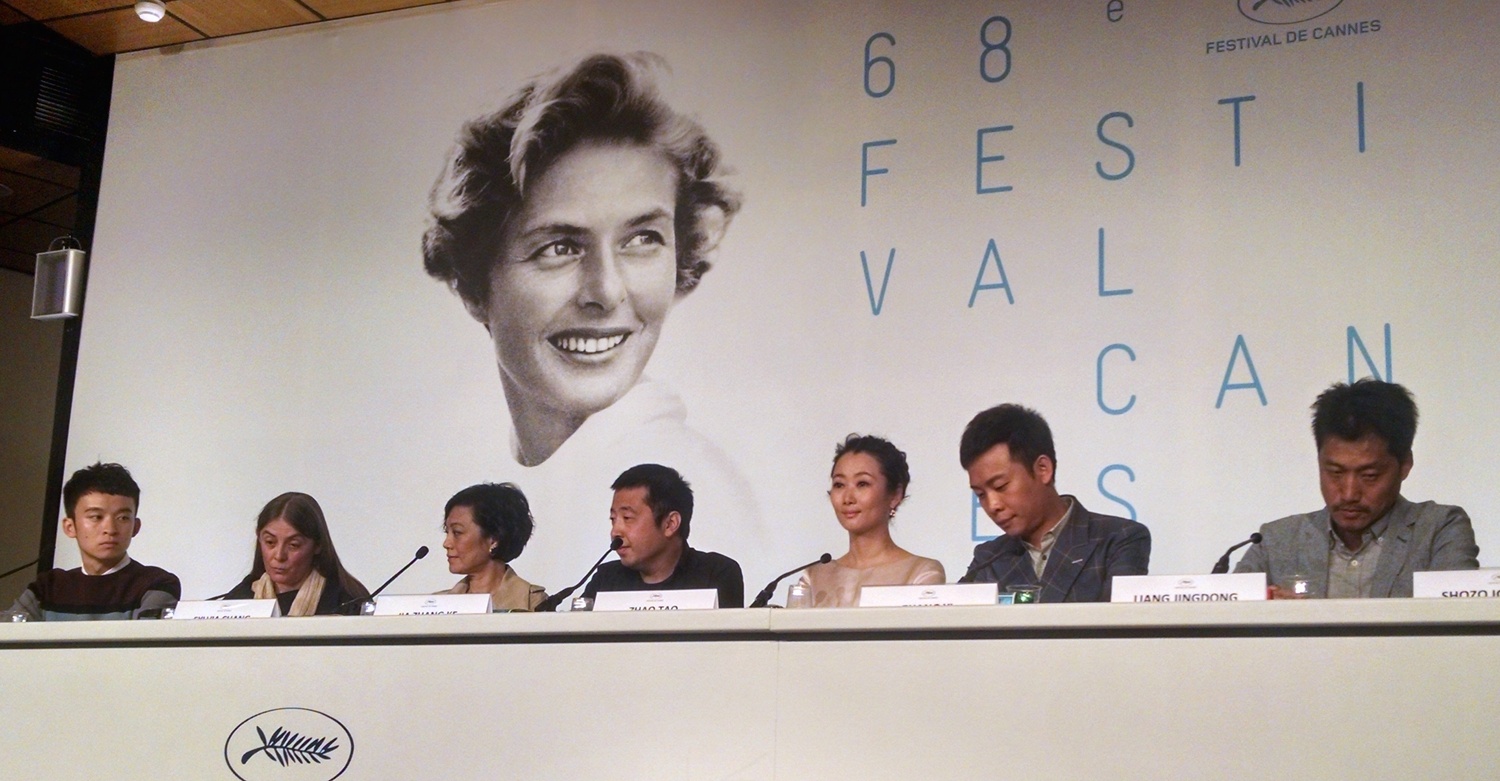
ARX: Our first film of the day is “Marguerite & Julien,” a lurid French romance about a brother and sister in love. The film has certain fairy tale elements and at times is vaguely visually reminiscent of Wes Anderson. I thought the drama was very overdone and that “Mon roi” was a better love story, although Vincent disagrees.
TVL: I actually love how the drama is overdone. That, together with the modern elements in the film, makes the piece very theatrical. It reminds me of Baz Luhrmann’s “Romeo + Juliet,” but more polished and with a refined stylistic touch. I believe an important reason that it is a huge letdown for critics is that François Truffaut spent a lot of time on this project when he was alive, and what the film ends up being couldn’t be further from typical Truffaut films. However, I do think that this reflects director Valérie Donzelli’s courage and confidence.
Read more of this debate in Alan & Vincent’s review of “Marguerite & Julien.”
I have been looking forward to “Nie Yinniang (The Assassin)” for a long time, since Hou Hsiao-Hsien is one of my favorite directors, and he has been working on this film for the last seven years. Surprisingly, however, I do not enjoy it as much as I expected to. The relationships among the characters are confusing, and, while Hou’s movies are always slow, “Nie Yinniang” is slow in a disorienting way. I oftentimes don’t understand the emotions of characters featured in close-up shots or Hou’s intentions in empty shots. I can’t focus on the film and look around the room to see a good number of people asleep or leaving. However, when the film ends, there is also a round of enthusiastic applause and a number of people almost screaming “Bravo.” The film receives a very divided reception, and, though many people are as confused as I am, some of them still love the film anyway because of its wonderful cinematography. It is definitely a film that demands several viewings to fully understand.
Read more in Vincent’s review of “Nie Yinniang”: “As it turns out, though, the movie goes beyond previous films in Hou’s arthouse style. Most of the film is devoted to an understated study of the protagonist’s psychological struggle.”
Day Nine: Thursday, May 21st
ARX: As the festival winds down, we notice that the lines for morning screenings have grown shorter. Today’s line for “Dheepan” is the shortest we’ve seen yet. The film is surprisingly good—I didn’t expect to be so captivated by the director’s visual aesthetic or the lead actor’s performance. As we exit the Grand Théâtre Lumière, two different French television outlets interview me about my reaction to the film. I tell them a pet theory that I’ve developed about the film’s final scene, which I believe to be a dream sequence.
Read more in Alan’s review of “Dheepan”: “The dark, narrow corridors of the apartment buildings are an ironic setting of imprisonment for the former freedom fighter—indeed, Dheepan's only place of refuge is not the cramped ground-floor apartment he shares with his faux-family but a dimly lit utility room in the basement where he can drink and smoke in peace.”
TVL: I am a big fan of director Paolo Sorrentino’s works, especially his 2013 film “The Great Beauty,” so I have been looking forward to “Youth” for almost two years. However, I was very disappointed by the trailers and posters—because it seems that the film is going to be not only a repetition of “The Great Beauty” but also a terrible imitation of it. I do, however, really like the piece—and while it is indeed very similar to “The Great Beauty,” Sorrentino still shows his creativity and makes the film different.
Read more in Vincent’s review of “Youth”: “Most people in the hotel, though, are nevertheless obsessed with their youth in one way or other. The fat retired soccer player tries to pick up his craft again and is always delighted to give autographs. The washed-up actress wishes to stay relevant and is doing a TV series in Mexico. The protagonist Ballinger always talks about old anecdotes with his best buddy Boyle, remembering, among many things, all the beautiful women they did not have the chance to sleep with.”
ARX: I’ve been excited about “The Other Side” ever since the night I watched “An,” the film that opened the Un Certain Regard section. During the opening ceremony, the festival showed a trailer featuring a short scene from every film in Un Certain Regard. The scene from this film depicted several Americans with southern accents shooting rifles at a car spray painted with the words “Obama sucks ass.” As provocative as this scene was, I am definitely unprepared for the film’s explicit nudity and drug use. Quite a few people actually walk out during the screening.
Read more in Alan’s review of “The Other Side”: “Italian-born director and co-writer Roberto Minervini—who recently completed a trilogy of films about the state of Texas—zeroes in on a marginalized community to present an unadulterated and poetically tragic portrait of small-town America.”
However, when we later go to a screening of Gaspar Noé’s “Love,” I am fully prepared for nudity, and lots of it. The festival has been abuzz for days about how “Love” is essentially a two-hour pornographic film, and this hype attracts the longest line outside of the Salle du Soixantième that I’ve seen so far. And the rumors aren’t wrong—the film’s first scene is a lengthy and explicit sex scene, one out of so many others in the film that we ultimately lose track of their number. Excluding the gratuitous sex scenes, I really admire Noé’s aesthetic. There are many scenes where he quickly fades to black for a second before returning to the same shot, almost like a blink. In others, he shifts interchangeably between the past and present, with both scenes framed identically in terms of character positioning. Nonetheless, I find the sex scenes—which appear to be completely unsimulated by the actors—to be gratuitously lengthy. If Noé had perhaps written a tighter script with more likeable characters and spent more time in the editing room, this could have been a five star film. Even so, it’s still one of the most visually remarkable films of the festival.
TVL: It seems that Gasper Noé has become the new “enfant terrible” of the festival. His last film, “Enter The Void,” stirred great controversy at Cannes, and he is now back again in the Out of Competition section with an even more daring piece that is rumored to be 3D arthouse porn. This time, the whole festival goes crazy for him. There are fans everywhere begging for a ticket, and the line in front of Salle du Soixantième is the longest I have seen there. The film is worthy of the hype; it has amazing visuals and some of the most impressive shots I have seen at the festival. However, at the same time, its story is incredibly weak and at times grating and annoying.
Read more in Vincent’s review of “Love”: “It is full of crazily stylistic shots, blinding psychedelic lights and sets, non-chronological narratives, electronic music mixed with post-rock and Erik Satie, and, above all, almost one hour of hardcore sex scenes.”
Compared to “Love,” “Valley of Love” is a much more tender but also more mediocre film. As far as I can remember, this screening is the first time that the theater is not full for a competition film. There is also not much discussion about the film on Twitter. It is not a bad film however; it just doesn’t have much that really surprises or impresses the audience.
Read more in Vincent’s review of “Valley of Love”: “While the film's subplot of a recovering relationship is somewhat clichéd, the main actors’ performances make it much more believable and touching than it would be otherwise.”
Day Ten: Friday, May 22nd
ARX: This morning’s screening of “Chronic” features Tim Roth, whom I really liked in the Fox television series “Lie to Me.” He played a body language scientist who uses his ability to read microexpressions in consulting work for the police. The science of the show is based on the research of Paul Ekman, who interestingly also served as a consultant on “Inside Out.” I also enjoyed Tim Roth in “Reservoir Dogs” and the 2008 version of “The Incredible Hulk,” but I still wonder whether he will be convincing as the lead in a slow, arthouse drama. I’m not disappointed.
Read more in Alan’s review of “Chronic”: “It is captivating to watch Roth in this role, as his character demonstrates unwavering patience and tenderness throughout the film—displayed, for example, one scene in which he cleans excrement off of a patient’s buttocks.”
TVL: The last film in the Out of Competition section is “The Little Prince,” an animated adaptation of the well-known French children’s novel. Although its roots are in France, the English-language film is made by American studios with almost exclusively American voice actors. This French fairy tale becomes transformed into a much more typical Hollywood story. As a huge fan of the original book, I don’t really enjoy this change. The director adds a significant amount original story to the screenplay, not all of which is good. Nonetheless, the mix of stop-motion and digital animation is extremely beautiful.
Read more in Vincent’s review of “The Little Prince”: “The complex themes are pared down to a simple child versus grown-up binary, where all grown-ups are emotionless working machines and children are naïve angels. The delicate melancholy throughout the original work vanishes and gives way to a sweetened comedy.”
ARX: Our final screening of the evening ends up not working out. The line outside the Salle Bazin is the longest we’ve seen so far at the festival, so we decide to take the rest of the day off and go to the beach. The skies are a gorgeous blue and we manage to secure a spot on the warm sand right next to the Cinéma de la Plage. This is where the festival screens old films every night, and the screenings are always free and open to the public.

Day Eleven: Saturday, May 23rd
ARX: As we take our seats in the Grand Théâtre Lumière for the last time, it’s quite the bittersweet moment. Today’s screening of “Macbeth” is the final showing of a competition film, and I’m extremely excited because the film stars Michael Fassbender opposite Marion Cotillard. I’m not sure how to feel after the film ends, because some of the dialogue was hard to understand and the scriptwriters heavily edited the original text. However, the visuals are absolutely stunning. I can hear someone in the crowd yelling “Bravo” as we exit. However, an American journalist being interviewed in the hallway begs to differ: “Worst Shakespeare adaptation ever,” he says. “Absolutely terrible.”
Read more in Alan’s review of “Macbeth”: “The brooding film devotes much of its two-hour runtime to resplendent visuals, showcasing the Scottish highlands through a variety of dark colors and filters. As Macbeth slowly realizes his inevitable tragic fate, Kurzel shifts from the deep blues of the first act into a red, hellish landscape that mirrors the protagonist’s state of mind and soul.”
Most journalists at the Macbeth press conference disagree. They all have high praise for the film, and for Fassbender and Cotillard. Many are also amazed by the film’s incredible cinematography. When asked about the best and worst parts of shooting in Scotland, Fassbender replies, “Whiskey and whiskey.” He and Cotillard are both extremely elegant and poised, and they are even kind enough to stay for five minutes after the press conference to sign autographs and pose for selfies.
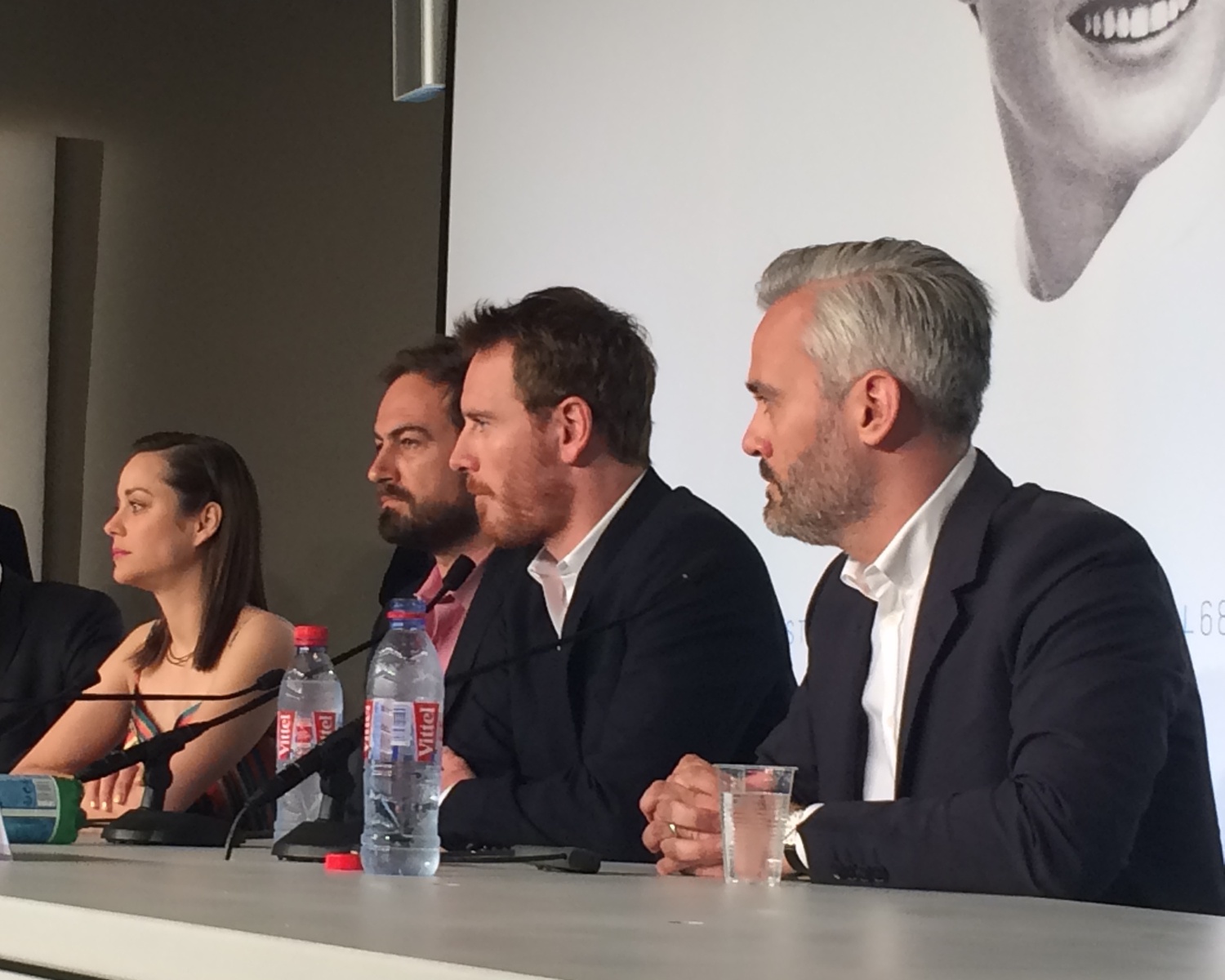
TVL: Now that all of the competition films have been shown, we will predict the awards that will be given at tomorrow’s closing ceremony. I think that this has not been the most exciting year for Cannes, as many films have turned out to be either bland or simply bad—but movies like “Carol,” “Nie Yinniang” and “Mia madre” have nonetheless stirred huge conversations within the film community and deserve to be recognized.
Palme d’Or: “Nie Yinniang (The Assassin).” First of all, “Nie Yinniang” is probably the most positively reviewed movie this year, and there's a lot of hype surrounding this breathtakingly beautiful Taiwanese epic. Moreover, even though Hou Hsiao-Hsien is one of the most important figures in Asian cinema, he has never won a Palme. The jury may take this chance to pay homage to him. The biggest uncertainty, however, comes from the fact that a large portion of the jury is American or British, and so they are accustomed to cinema heavily influenced by the dramatic tradition. They may not appreciate a film that emphasizes visuals over story as much as they should.
Grand Prix: “Shan He Gu Ren (Mountains May Depart).” Jia Zhang-Ke’s new film is interesting and original, but may not be not good enough for the Palme, so it makes sense for it to take the so-called “second prize” at Cannes. Additionally, “Shan He Gu Ren” is similar in style to the works of several of the directors in the jury, especially those of Xavier Dolan, whose last movie, “Mommy,” tells a comparable story. Therefore, the jury will probably not let the film leave without a significant award. Apart from the Grand Prix, there is no important award suitable for “Shan He Gu Ren.”
Jury award: “Saul Fia.” This film is one of the biggest highlights of this year's Cannes, and it will likely win the Jury award. Often interpreted as the “encouragement award,” the jury award is for films that are not necessarily perfect but that show a lot of potential. “Saul Fia” is unique, but it also has some obvious flaws, so this award is the right place for it.
Best Director: Nanni Moretti, “Mia madre.” Having won a Palme d'Or already, Moretti is one of the most respected and talented directors in the world; he evidently heavily influenced both directors of the other two Italian movies at Cannes this year, “Tale of Tales and “Youth.” With another brilliant and touching piece at this year’s festival, he is the ideal candidate for this award.
Best Actor: Vincent Lindon, “La loi du marché.” Lindon gives arguably the best performance of his career with a nuanced and sympathetic interpretation of an ordinary man suffering from an economic crisis. “La loi du marché” is one of the few films in this year’s Cannes that completely focuses on a male protagonist, and the fact that it is a French film is definitely a plus at Cannes.
Best Actress (joint): Cate Blanchett and Rooney Mara, “Carol.” It is likely that the two stars of “Carol” will win this award together. They presented brilliant and inseparable performances, and their film was made to let them shine. It’s hard not to think of the duo immediately when considering the Best Actress award.
Best Screenplay: The Lobster. “The Lobster” has a very interesting setting and presents a complex worldview. Its screenplay is full of satire and wisdom, and Best Screenplay is the appropriate accolade for this weird but impressive film.
ARX: I agree with Vincent on some points—I really enjoyed the dark humor of “The Lobster,” and it’s likely that the jury, which is led by the darkly comedic Coen brothers, will recognize it for some award. I would add that Tim Roth in “Chronic” and Michael Caine in “Youth” are also favorites for Best Actor.
Palme d’Or: “Carol.” As one of the most balanced and polished films of the festival, “Carol” is likely a shoo-in for the Palme d’Or. At least five members of the jury hail from North America or the United Kingdom, and it’s likely that this English language film will hit their sweet spot. Its beautiful direction, combined with solid performances by Cate Blanchett and Rooney Mara, make it a safe choice compared to other candidates, such as “Nie Yinniang,” which may not be able to gain a consensus among the jury despite its visual brilliance.
Grand Prix: “Nie Yinniang.” Hou Hsiao-Hsien’s most recent film was beloved by most critics, and the Grand Prix would be a solid compromise between those who think it deserves the Palme and those who might not have found its understated acting or focus on cinematography very compelling.
Jury award: “Saul Fia.” It’s rare that the Palme d’Or has gone to a debut film like “Saul Fia,” but it still received excellent reviews that make it a solid contender for an award. It debuted early in the festival and stunned many—including myself—with its unflinching portrayal of the Holocaust. With such stiff competition this year, it’s likely that the jury will choose to recognize “Saul Fia” with the Jury award.
Best Director: Justin Kerzel, “Macbeth.” In a tough field dominated by greats like Hou Hsiao-Hsien and Paolo Sorrentino, the jury might choose to recognize the lesser-known Justin Kerzel for his fantastic work on “Macbeth.” He’s not as obvious a choice as Hou Hsiao-Hsien, but the jury can only give one award per film and will likely choose to honor his film with a higher award.
Best Actor: Tim Roth, “Chronic.” Vincent Lindon, Michael Caine, and Tim Roth are the three names currently being discussed for this award. Both Lindon and Roth deliver very nuanced, understated performances in similar realist dramas, but I enjoyed Roth’s more, as his film’s screenplay gave him greater room to shine.
Best Actress: Emmanuelle Bercot, “Mon roi.” Bercot’s performance has divided critics, with some calling it over-the-top and others praising its emotional range. I found it to be one of the better female performances, although the duo of Cate Blanchett and Rooney Mara is also a huge contender for a joint award. However, “Carol” is likely to pick up a higher award like the Palme. Margherita Buy in “Mia madre” and Zhao Tao in “Shan He Gu Ren” are also contenders, but I found Bercot’s performance more compelling than Buy’s and Tao’s performance to be limited by the overly ambitious narrative of “Shan He Gu Ren.”
Best Screenplay: “The Lobster.” Although perhaps too strange or dark to be recognized for any of the major prizes, Yorgos Lanthimos’s satirical comedy is very well written and has been praised by critics. The Coen brothers might have a strong affinity for this type of film, and, given the high quality of the films above, could choose to honor it with this award.
Day Twelve: Sunday, May 24th
TVL: In a grand closing ceremony, the long awaited results of the 2015 Festival de Cannes were announced, with quite a few surprises. Following is the full list of the awards.
Palme d’Or: “Dheepan”
Grand Prix: “Saul Fia”
Jury award: “The Lobster”
Best Director: Hou Hsiao-Hsien, “Nie Yinniang”
Best Actor: Vincent Lindon, “La loi du marché”
Best Actress (joint): Rooney Mara, “Carol,” and Emmanuelle Bercot, “Mon roi”
Best Screenplay : “Chronic”
Many media outlets have described the victory of “Dheepan” as a shock, and I myself am still curious why the jury chose the film. While it is a beautiful and poignant work, its last thirty minutes have many obvious flaws, and its overall quality is matched, if not surpassed, by many other films.
I thought the Best Director award would go to Nanni Moretti, but instead it went to another veteran director, Hou Hsiao-Hsien. While Hou’s delicate new film “Nie Yinniang” is definitely worthy of the award, it also means that all three Italian films at this year’s Cannes went home empty-handed. This is rather surprising, because both “Youth” and “Mia madre” have received very positive reviews.
However, it is unsurprising that “Saul Fia” won the Grand Prix or that Vincent Lindon won Best Actor, as they are both very deserving of these awards. In contrast, the decision for the Best Actress award was a bit unusual. According to many media outlets, the leading candidate was Cate Blanchett, but the award was instead given to her “Carol” co-star Rooney Mara together with the French actress Emmanuelle Bercot for “Mon roi” (Bercot also directed the festival’s opening movie, “La Tête Haute”). In my opinion, Blanchett’s performance in “Carol” was widely lauded partly because the role itself was impressively written. Both Mara and Bercot did a splendid job even within the narrowly written constraints of their characters, and this may be why they were awarded the prize instead of Blanchett.
ARX: I was pleased by the fact that “The Lobster” was recognized with the Jury award, and it wasn’t too big of a shock that “Saul Fia” was awarded the Grand Prix. I found the choice of “Dheepan” for the Palme d’Or to be interesting—it was an excellent film that had a decent shot, but, given other contenders, such as “Carol” and “Nie Yinniang,” I had written it off. “Chronic” definitely deserved the Best Screenplay award—it was a meticulously structured and well-written film. Vincent was also correct that Vincent Lindon would take the Best Actor award, but I was surprised that they chose to split the Best Actress award between both Emmanuelle Bercot and Rooney Mara, leaving out Cate Blanchett.
It has been an incredible experience watching this year’s best films from around the world, and I’m looking forward to hearing about them once again when Oscar season approaches. I still can’t believe that we Vincent and I were able to meet acting legends like Matthew McConaughey and Marion Cotillard, directors like Pete Docter and Gus Van Sant, and many more extremely talented individuals whom I have always admired. After 12 grueling days and a prolific 31 reviews (plus a few trips to the beach), Vincent and I are ready for a well-deserved break from watching films.
After the evening’s award ceremony, we make our final walk home before leaving Cannes the next morning. The bars that line the narrow, winding streets of this seaside town have quieted, and noisy patrons no longer overflow onto the boulevard with impassable density. I recall one reporter we spoke to during the festival who mentioned that she had been covering Cannes for more than 25 years—equivalent to more than a full year of her life solely dedicated to watching films and writing reviews. Our exciting and eventful first year has certainly been a demanding baptism by fire, but that’s a track record we can only dream of surpassing.
—Staff writers Alan R. Xie and Tianxing V. Lan can be reached at alan.xie@thecrimson.com and tianxing.lan@thecrimson.com.
Want to keep up with breaking news? Subscribe to our email newsletter.
